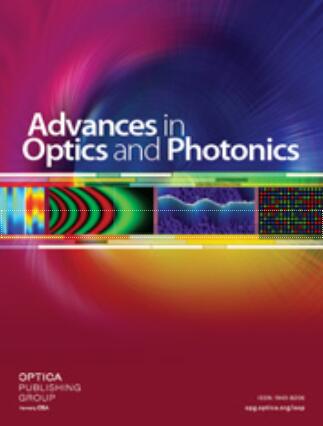Resolution enhancement in quantitative phase microscopy
IF 23.8
1区 物理与天体物理
Q1 OPTICS
引用次数: 45
Abstract
Quantitative phase microscopy (QPM), a technique combining phase imaging and microscopy, enables visualization of the 3D topography in reflective samples, as well as the inner structure or refractive index distribution of transparent and translucent samples. Similar to other imaging modalities, QPM is constrained by the conflict between numerical aperture (NA) and field of view (FOV): an imaging system with a low NA has to be employed to maintain a large FOV. This fact severely limits the resolution in QPM up to 0.82λ/NA, λ being the illumination wavelength. Consequently, finer structures of samples cannot be resolved by using modest NA objectives in QPM. Aimed to that, many approaches, such as oblique illumination, structured illumination, and speckle illumination (just to cite a few), have been proposed to improve the spatial resolution (or the space–bandwidth product) in phase microscopy by restricting other degrees of freedom (mostly time). This paper aims to provide an up-to-date review on the resolution enhancement approaches in QPM, discussing the pros and cons of each technique as well as the confusion on resolution definition claims on QPM and other coherent microscopy methods. Through this survey, we will review the most appealing and useful techniques for superresolution in coherent microscopy, working with and without lenses and with special attention to QPM. Note that, throughout this review, with the term “superresolution” we denote enhancing the resolution to surpass the limit imposed by diffraction and proportional to λ/NA, rather than the physics limit λ/(2n med ), with n med being the refractive index value of the immersion medium.定量相显微镜的分辨率增强
定量相位显微镜(QPM)是一种相成像与显微镜相结合的技术,可以可视化反射样品的三维形貌,以及透明和半透明样品的内部结构或折射率分布。与其他成像方式类似,QPM受到数值孔径(NA)和视场(FOV)之间冲突的限制:必须采用低NA的成像系统来保持大的视场。这一事实严重限制了QPM的分辨率高达0.82λ/NA, λ为照明波长。因此,在QPM中使用适度的NA物镜无法分辨样品的精细结构。针对这一点,许多方法,如倾斜照明,结构照明和散斑照明(仅举几例),已经提出了提高空间分辨率(或空间带宽产品)在相位显微镜通过限制其他自由度(主要是时间)。本文综述了QPM中分辨率增强方法的最新进展,讨论了每种技术的优缺点,以及QPM和其他相干显微镜方法在分辨率定义要求上的混淆。通过这一调查,我们将回顾在相干显微镜中最有吸引力和最有用的超分辨率技术,使用和不使用透镜,并特别关注QPM。请注意,在整个回顾中,我们用“超分辨率”一词表示提高分辨率以超过衍射所施加的极限,并与λ/NA成正比,而不是物理极限λ/(2n med),其中n med为浸没介质的折射率值。
本文章由计算机程序翻译,如有差异,请以英文原文为准。
求助全文
约1分钟内获得全文
求助全文
来源期刊

Advances in Optics and Photonics
OPTICS-
CiteScore
56.60
自引率
0.00%
发文量
13
期刊介绍:
Advances in Optics and Photonics (AOP) is an all-electronic journal that publishes comprehensive review articles and multimedia tutorials. It is suitable for students, researchers, faculty, business professionals, and engineers interested in optics and photonics. The content of the journal covers advancements in these fields, ranging from fundamental science to engineering applications.
The journal aims to capture the most significant developments in optics and photonics. It achieves this through long review articles and comprehensive tutorials written by prominent and respected authors who are at the forefront of their fields.
The journal goes beyond traditional text-based articles by enhancing the content with multimedia elements, such as animation and video. This multimedia approach helps to enhance the understanding and visualization of complex concepts.
AOP offers dedicated article preparation and peer-review support to assist authors throughout the publication process. This support ensures that the articles meet the journal's standards and are well-received by readers.
Additionally, AOP welcomes comments on published review articles, encouraging further discussions and insights from the scientific community.
In summary, Advances in Optics and Photonics is a comprehensive journal that provides authoritative and accessible content on advancements in optics and photonics. With its diverse range of articles, multimedia enhancements, and dedicated support, AOP serves as a valuable resource for professionals and researchers in these fields.
 求助内容:
求助内容: 应助结果提醒方式:
应助结果提醒方式:


